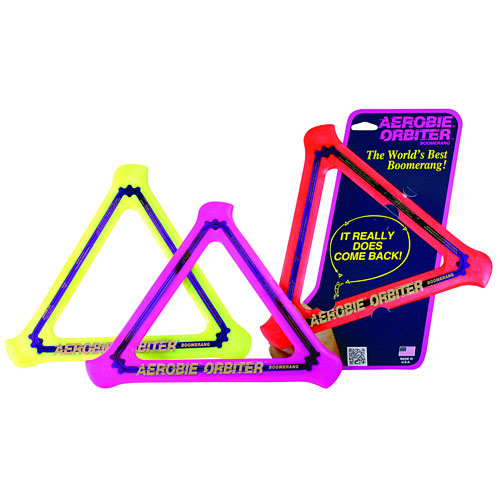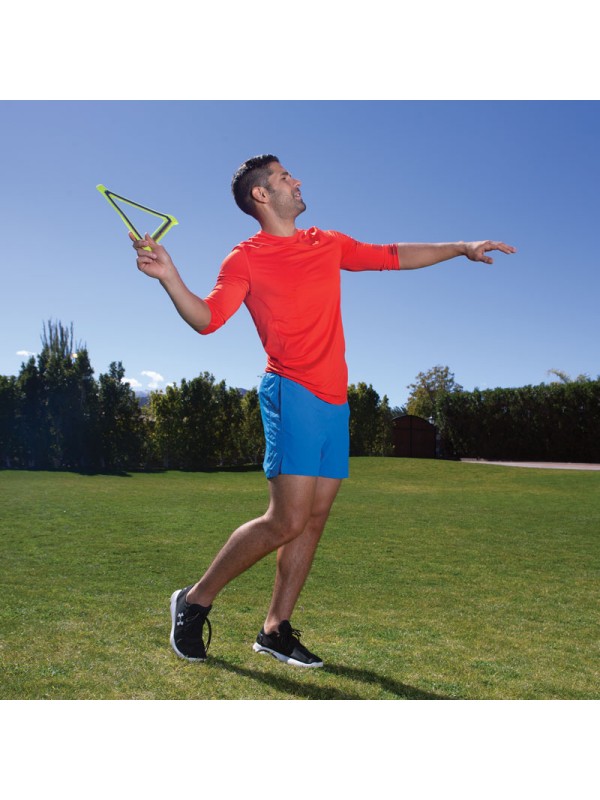
Its lift depends on its speed relative to the air. But similarly to a disc, an Aerobie can be thrown in a curved path by throwing it in a slant. It does not have the tendency to roll when thrown level, as a flying disc does. When well tuned, it can fly in a straight line, "like a puck on an invisible sheet of ice". It flies faster and farther than a common flying disc. The Aerobie allows for throws over unusually long distances. In 2017, the assets of the Aerobie flying ring and other Aerobie assets were sold to Swimways, a subsidiary of Spin Master, and the company was renamed to AeroPress, Inc. After testing several models, the ideal shape was found, and the Aerobie was produced. The later introduction of the spoiler, which balanced the lift, made the ring stable "over a wide range of speeds". It had low drag but was stable at only a certain speed.

It lacked the spoiler rim of the Aerobie.

In 1980, it was used to set a Guinness World Record throw of 261 metres (856 ft). This led to the development of the predecessor of the Aerobie, which was called the "Skyro". Eventually, inspired by British accounts of deadly Indian weaponry and martial arts, he turned his attention to the ring shape of the Chakram, a formidable Punjabi weapon used by the Sikh of India. He tried streamlining the shape to reduce drag, but this resulted in a disc that was more unstable in flight. In the 1970s, Alan Adler began attempting to improve the flying disc, considering its design characteristics.


 0 kommentar(er)
0 kommentar(er)
